Last Chance to Catch NYC's Holiday Notalgia Train
We met the voices of the NYC subway on our nostalgia ride this weekend!


Churches all around the world bear the name ‘Trinity Church.’ The most unusual by far happens to be a small Russian Orthodox Trinity Church made of Siberian pine wood on the tip of King George Island in Antarctica. The most famous, arguably, is Manhattan’s Trinity Church. Once the tallest building in the city, the church, actually three churches of the same name that were built on the same ground, is one of the most well-endowed and recognizable sights in New York City. In another time, it was the first thing sailors and voyagers saw when pulling into New York Harbor. Today, though it is dwarfed by buildings, it holds a place in the Financial District that is closely intertwined with history. Here are 10 of the most enticing secrets we dug up about it.
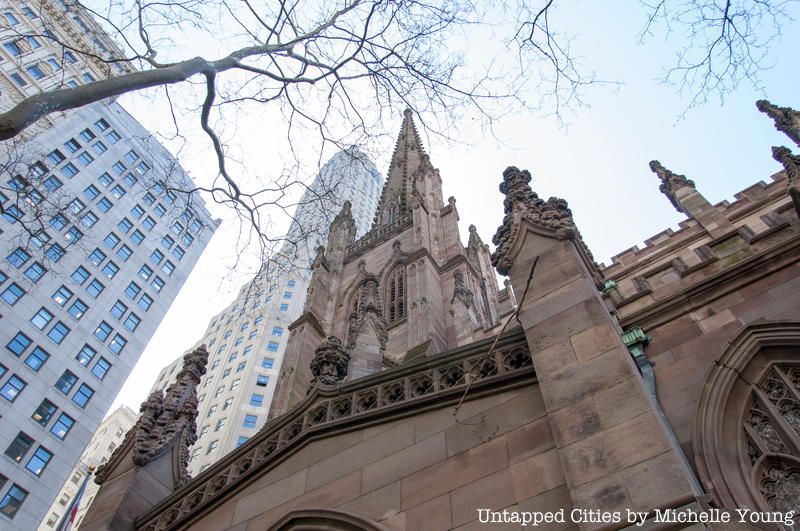
After the Church of England community received its charter from King William III in 1697, it set about building a modest church on a plot of land near what is now Manhattan’s South Ferry. They were aided in construction by Captain William Kidd, a Scottish sailor who was later arrested and executed on counts of piracy after a voyage to the Indian Ocean. Kidd lent the church’s builders the runner and tackle from his ship to lift the stones needed for the church’s foundation and walls. Though commonly branded a pirate, there is evidence to suggest that Kidd was simply a privateer, with most of his reputation stemming from his very public arrest and trial.
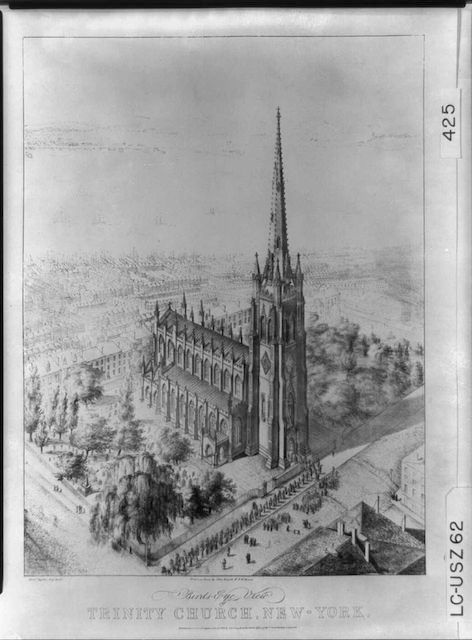
Trinity Church in 1846. Image via Wikimedia Commons
The church’s original land grand supplied by William III, of Holland, called for a yearly payment of 60 bushels of wheat especially for the king. When Queen Elizabeth II visited the church in 1976, she was presented with a ‘back rent’ of 279 peppercorns. Apparently, the crown had not been paid its annual fee for quite some time.
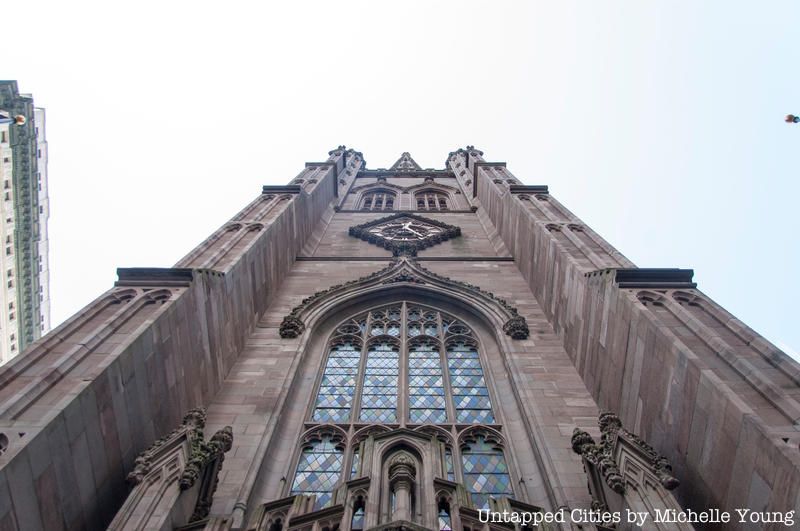
A lawsuit in 2011 revealed Trinity Church’s total assets to be around $2 billion, stemming from its ownership of 14 acres of Manhattan real estate, including 5.5 million square feet of commercial space in Hudson Square. Its endowment makes it one of the richest parishes in the world.
Check out our article on the Trinity Church tenements for more information on its prior landowning status.
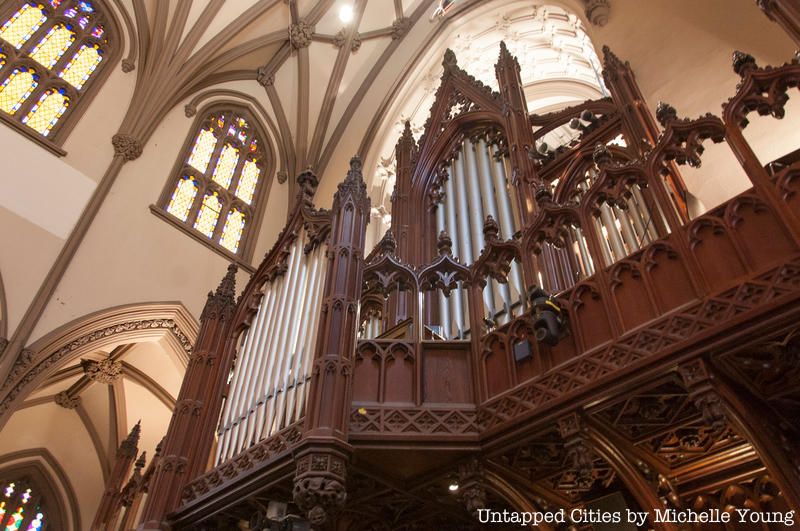
Following General Washington’s retreat after the disastrous Battle of Long Island, New York City became the British Army’s main base of operations in North America. Clergy Trinity Church was required to be Loyalist. After the end of the war, the church’s rector, Rev. Samuel Provoost, amended the charter of Trinity Church and deleted the provision that mandates its loyalty to the English crown. Provoost was later appointed the first Bishop of the Diocese of New York.
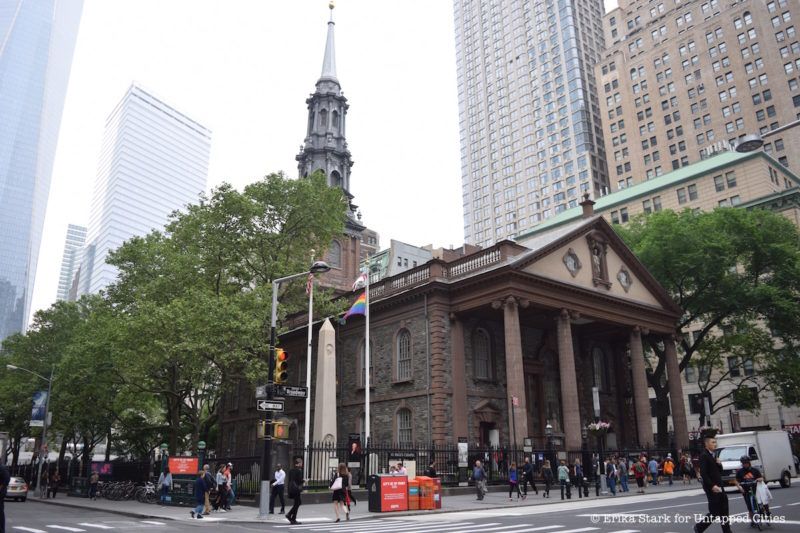
The parish of Trinity Church contains St. Paul’s Chapel, an episcopal chapel on Broadway and Fulton Street that is also the oldest surviving church building in Manhattan. Of the many who have worshipped there in its long history, the most famous is probably George Washington, who went to service there on the date of his inauguration in 1789.
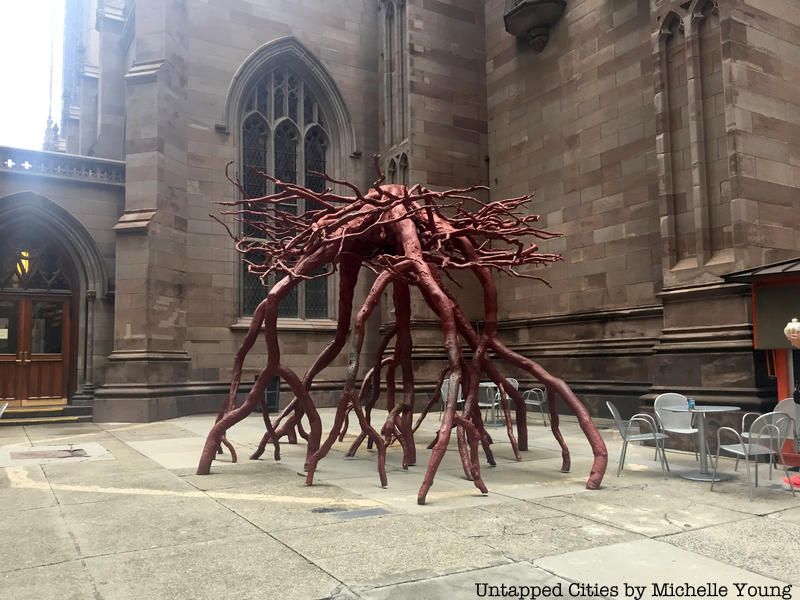
Trinity Church was bombarded with debris and ash in the immediate aftermath of the September 11 attacks. New Yorkers escaping the chaos outside found shelter within its walls, even as the World Trade Center towers collapsed only three blocks away. During this time, debris from the towers knocked down a hundred-year old sycamore tree that stood outside St. Paul’s Chapel. The tree’s remains were fashioned into a bronze memorial sculpture by artist Steve Tobin that still stands there today.
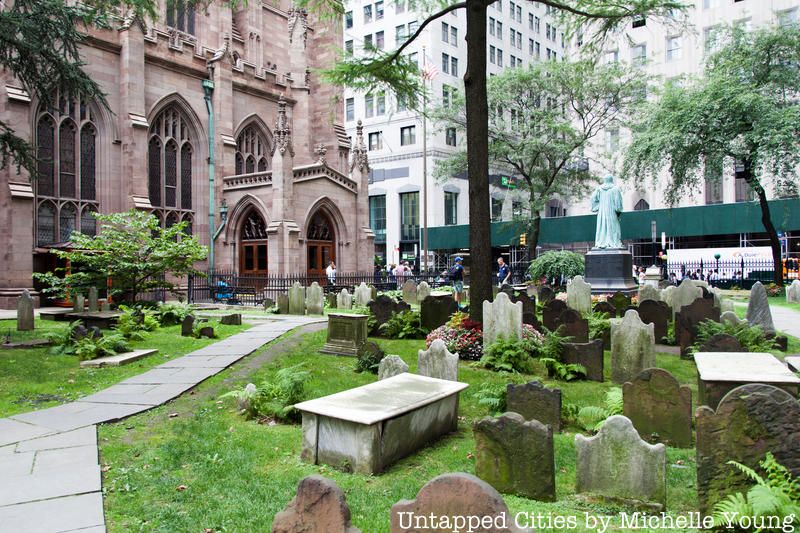
There are three sites of Trinity Church’s cemetery: the Trinity Churchyard at Wall Street and Broadway, The Trinity Church Mausoleum and Cemetery on 155th Street, and the churchyard of St. Paul’s Chapel. They are the last active cemeteries left in Manhattan and are the burial grounds for many of New York’s historic figures. The Trinity Churchyard in particular houses the graves of Alexander Hamilton, steam engine pioneer Robert Fulton, and Albert Gallatin, the founder of New York University.
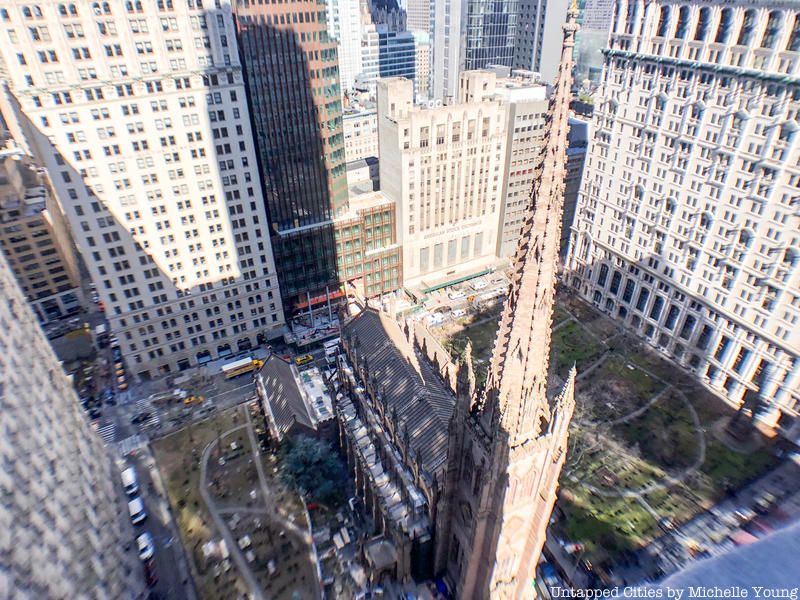
From its construction in 1846 to the completion of the New York World Building in 1890, Trinity Church was the atallest structure in New York City. As skyscrapers became more common and ever more ambitious, however, the once-towering church found itself in the shadow of buildings and towers twice its size. A humorous cartoon, ‘The Future of Trinity Church,’ published in 1907 by Albert Levering in Puck’s Monthly Magazine and Almanac guessed at the church’s future, lost in a bustling world of modernity. The wood engraving is thought to be a parody of the famous King’s Dream of New York illustration, which showed a future New York City of skyscraper walls, skybridges and blimps.
Though a building has yet to surround Trinity Church the way the engraving depicts, fears of a city completely engulfed in the shadow of ever-larger skyscrapers prompted the Zoning Ordinance of 1916, requiring height and setback limits on any future building in the city.
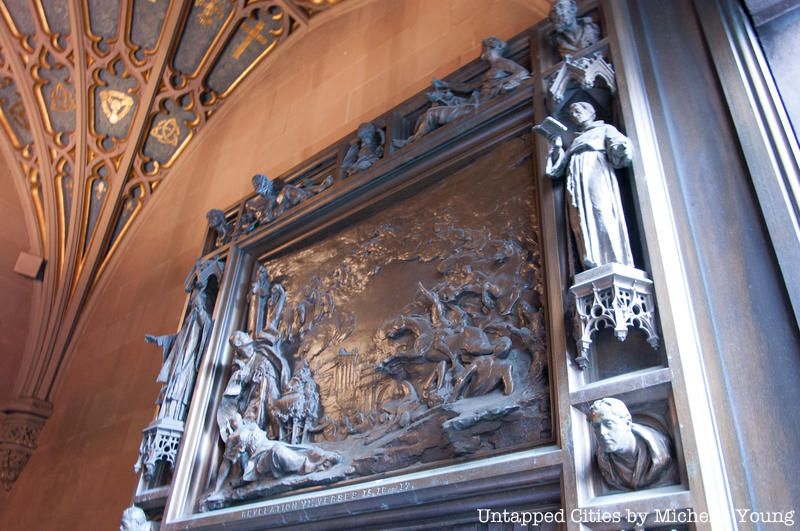
Trinity Church’s three bronze doors were gifted to the parish by William Waldorf Astor, 1st Viscount Astor. Each was designed by a different architect Karl Bitter for the east door, J. Massey Rhind for the south door and Charles Henry Niehaus for the north door. The south door below eschews depictions of religion for the history of the city itself, showing in one panel the consecration of the first Trinity Church.
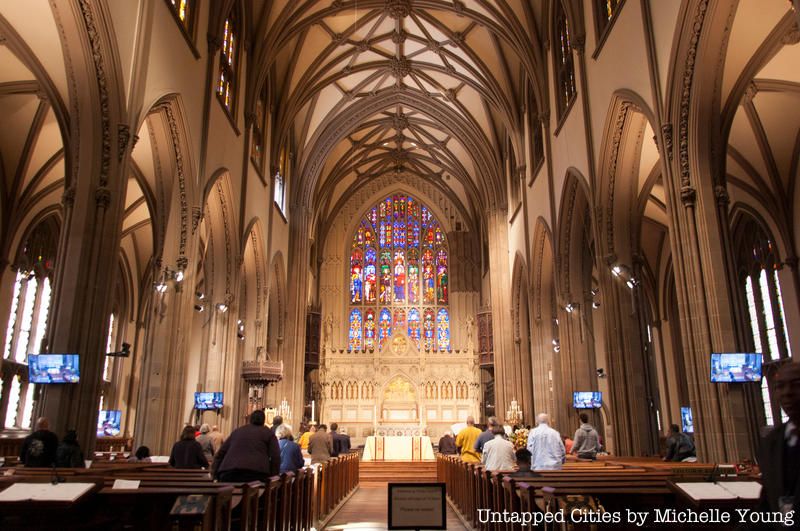
Starting in the 1780s, a number of descendants of a 17th century Dutchwoman, Anneke Jans Bogardus, claimed that Queen Anne, who granted the church’s land in 1705 after William III, had no right to grant it in the first place. In a series of lawsuits of the next few decades (all unsuccessful) Bogardus’ descendants attempted to prove that Bogardus still held original claim to the land because only five her six heirs ceded its ownership to the English crown. The case was revived once more in the 20th century but proved unsuccessful again.
Bogardus’s descendant, James, went on to design the Bogardus Building, stolen twice.
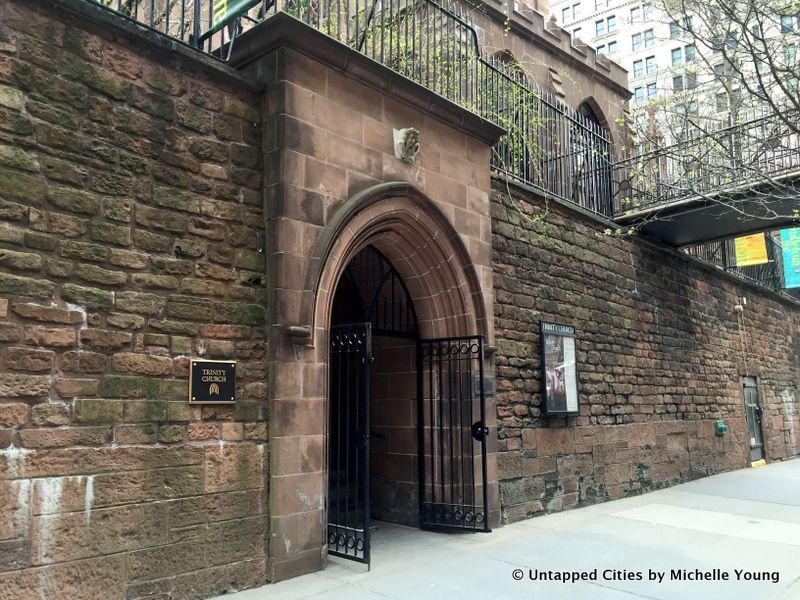
A stone cherub on Trinity Church comes from a Christopher Wren-designed church in London. The church of St. Mary-le-Bow was destroyed by the German blitz, but this cherub was found on the site during its reconstruction and gifted to Trinity Church in New York, its sister church, as a thank you for its financial contributions.
A plaque, also dedicated by Mayor LaGuardia, dubbed this entrance on Church Street, Cherub Gate. It reads:
“The cherub above is a gift to Trinity Church from the Church of St. Mary-le-Bow in London which was designed by Sir Christopher Wren in 1680 and was destroyed in an air raid on May 10, 1941. The cherub survived the bombing and was presented to Trinity Church on Jun 11, 1964.”
Next, read about 5 of the oldest and most intriguing buildings in the nearby Hudson Square. Get in touch with the author @jinwoochong.
Subscribe to our newsletter